From Forbes by Lindsey Bartlett April 11 2024
Indigenous women are reclaiming their heritage through weed.
Reservations and the Native Americans who inhabit them walk a tightrope, balancing sovereignty with government relations. Tribes exist beyond the bounds of state lines, one reality that complicates the cannabis legalization matter even more. That’s why powerful indigenous authorities in the cannabis community are leading the way in collaborative and regenerative farming.
Mary Jane Oatman is among these influential voices. A member of the Nez Perce and Delaware tribes, she’s also the COO and Executive Director of the Indigenous Cannabis Industry Alliance. The ICIA hosts events year-round that amplify and support the indigenous entrepreneurs who work in cannabis.
“We need to do this in a way that does not create a capitalistic commodity on the backs of Mother Earth,” says Oatman. “That is one of those campaigns ICIA is working on, protecting Mother Earth. Growing cannabis in an environmentally conscious way that benefits the next generations. As an organization, we will dig our heels in the sand to make sure it is not a capitalistic approach, but a human and healing approach.”

The work that Oatman has been doing as the Executive Director of the ICIA is groundbreaking. “We’re convening tribes around such a taboo issue but doing it in a way that is breaking down the capitalist silos to get tribes to work together cooperatively,” she says. “That is the power, that is the why. To get tribes to work together.”
She says unless Tribal Leaders take a strong stand for cannabis in government-to-government relations, they will have to wait for federal legalization, descheduling or rescheduling. “It’s not if but when,” says Oatman. “Tribal members want to be prepared. They want to have their legal house in order and have smart ordinances in place and regulatory systems in check. All of that can happen before states even legalize. Even if they’re not touching the plant, they can be building the infrastructure.”
The more education sent out into the world that details the benefits of hemp and cannabis, the better for all Americans, says the Executive Director. She also points to ancillary opportunities that indigenous communities thrive in.
“Focusing on the recreational retail green rush is short-sighted,” says Oatman. “The future is in industrial fiber. That is a transition needed for the climate change work we have to do. Industrial fiber made with hemp is the gospel. Cannabis can be smoked, yes. But industrial fiber large-scale manufacturing products, breaking away from the plastic industry? That’s where tribes have a huge impact given our land rights.” In industrial fiber, Oatman points to the work of the Lower Sioux Indian Community who have been building hempcrete housing. “I am a huge fan of them,” she says.

She explains how entrepreneurs can find their lane of success in this nascent industry: “I do feel like it is such a complex area to emerge into,” says Oatman. “Many entrepreneurs in incubator opportunities and startups can find a pathway. The other important part of that is shouting from the rooftops: the cannabis industry doesn’t mean plant-touching. The shining stars I’m able to work with in the cannabis industry include media, marketing, and brand development. That is really critical in a saturated market. How do you stand out in quality? Make people want to choose your brand. Have that vision to incognizant how your brand can stand out from the others.”
One reason that Oatman is the fierce advocate she is today is because her grandmother went to federal prison for growing in the 1980’s, which created a tremendous amount of stigma and shame around cannabis use and cultivation in her family. “We were able to weather the storm and keep our heads high on our shoulders,” she says. “By working on the liberation of this plant medicine, we’re preserving tribal sovereignty. Most of our communities, over history, had a preexisting relationship with smoking plants. In whatever blend that was—it was different for each person. It’s an opportunity for tribes to reclaim their individual stories.”
The aftershock of the War on Drugs is still felt, especially by indigenous elders. It is a regular practice to have drug dogs and targeted search on the reservation, says Oatman. Her grandmother fears the police to this day. “My passion for doing this is because there are so many other grandmothers and grandfathers out there like my grandma who live in fear. I don’t want anyone to live in fear anymore.”

What Tribes Need To Succeed In Weed
What does the Indigenous community need most in this moment? “We need the tribes across the nation to see that we’re not going to be going back in time,” says Oatman. “The consistent thing we hear from tribes is they fear the fact that it is still federally illegal. There are a lot of tribes out there who will not touch cannabis until it is descheduled or rescheduled. There are a certain amount of tribes who move cautiously, they don’t want to break those federal laws.”
The majority of tribes in Washington and Oklahoma are operating recreational and retail cannabis. Cannabis is not yet legal on the Nez Perce reservation in Idaho, Oatman’s homeland. Idaho is one of the few remaining states to not have a recreational or medical market. Legislation recently introduced a bill in the state this year that proposes a mandatory $420 minimum fine for possession of less than 3 ounces.
“It comes down to a jurisdictional battle between the tribes and the state,” she says. “It is a political battle where the tribal citizens are caught in the crosshairs. It’s not just tribal, but the policing of tribes.”
Oatman’s tribe is in a rare position, since they possess lands in more than one state. “We own lands in Washington as well as Oregon,” says Oatman. “We are uniquely positioned as a tribal nation to be able to explore testing, retail operations, and cultivation in those two states that are recreational legal.” She says that various tribes are trying to explore what semi-legalization looks like in Idaho, which starts with removing harsh penalties in employment. “One of the biggest liberations in the tribal community comes when the elected leader’s administration makes the changes so that people can have jobs and not have to fear employment insecurity,” says Oatman.

How can readers uplift the work of indigenous entrepreneurs in the space? Oatman says you can begin by supporting organizations like the ICIA, which is building a robust platform, including more education campaigns, for the broader public. “Support the tribes that are already doing it and doing it very well,” Oatman suggests. “They figured out how to regulate cannabis and do it at a very high level, exceeding what the state standards and laws are around cannabis. Organizing these tribes is so critical. The more we can shine the light on the beacon tribes, the better.”
Oatman offers parting advice for other indigenous people, POC, women, or cultivators from all backgrounds on how to survive and thrive in this environment. “As a closeted cannabis user, I did not live in my authentic truth with my relationship with the plant,” she says. “Embrace the reality that we have such a very short life on this earth and we should not live it within the confines of waiting for government permission to heal ourselves.”
Tribal brands that Oatman knows will withstand the test of time include Socal First Nations, a conglomerate of tribal cultivations in California. Another is the Native Nations Brand founded by members of the Flandreau Santee Sioux Tribe in South Dakota. It’s the largest medicinal cannabis cultivation in the state. “They kept community health at the center point of their model,” says Oatman. “They are servicing not just tribal communities but all citizens in the region who are seeking access to state-tested, safe, and affordable cannabis products. One thing that often gets overlooked is the high cost. We don’t want it to be overtaxed so that it is now a burden on the patients,” says Oatman.
Highly regarded among indigenous-owned brands is Native Humboldt Farms. Its CEO and founder Lindsey Renner, “has really done something very impactful in the storytelling of reclaiming the opportunity to grow medicine on her family’s ancestral homeland,” says Oatman. “That is a big part of her story.”

The Power Of Native Humboldt Farms
Lindsey Renner is embracing her place as a leader among indigenous-run cannabis brands. Renner is a member of the Round Valley Indian Tribe out of Northern California. She is a 3rd-generation farmer in Humboldt, California, returning to her grandmother’s land in 2008 on Wailaki Tribe territory. She founded Native Humboldt Farms on land that belonged to her tribe before white incursion. Her story has inspired countless other cannabis entrepreneurs to reclaim their regenerative farming heritage for the benefit of consumers.
“What we need consumers to understand is that the market is inundated with mids,” says Renner. “As craft farmers, we feel that consumers deserve the very best quality, the very best high. We want them to understand that craft is quality, and buying flower with robust cannabinoid and terpene profiles will deliver a more rich and robust experience to the end consumer.”

Renner says that consumers can uplift craft growers and indigenous cultivators right now through buying power. “Know your farmer, know their farming practices,” says Renner. “Know that sun-grown grown in living soil in unique appellations really adds to the cannabinoid and terpene profiles of the flower you are purchasing. Purchase with a purpose, and purchase the quality you deserve.”
On the regulatory front, Renner says that fair testing practices are paramount. The founder says that in California’s legal market over the course of the last few years, two-thirds of testing labs had been found to be inflating cannabinoid percentages which was disproportionately affecting small farmers. “It seemed to be a pay-to-play environment that hindered equitable competition,” says Renner. “Now that regulators have created standardized testing regulations, I think that small farms will have a better standing in the market. I just batch-tested some sun-grown flower that tested with 38% Total Cannabinoids 31.87% Total THC and 25 different terpenes, so it seems that the playing field has been leveled. This is a game-changer.”
Native Humboldt Farms is known for its glossy, pristine, white-trichome-covered sun-grown cannabis. Native Humboldt is one of the farms that grows for Cookies as part of its Humboldt-Grown Initiative. Cultivars from the brand include its own proprietary genetics as well as those of esteemed genetics, ranging from sugary-sweet Mexican Flan to Pink Gelato, Blackberry Pound Cake, Tequila Sunrise, and more.
“Embrace your strengths as a woman in the cannabis industry,” says Renner. “Your empathy, ability to collaborate, and attention to detail are not weaknesses; they are powerful tools that differentiate you and contribute to your success. Use your intuition to navigate challenges, communicate authentically, and empower those around you. Remember that diversity drives innovation and progress, and that is just what the cannabis industry needs. Embrace your uniqueness, because you are not only succeeding for yourself, but you are paving the way for others.”
While many say that women in this industry are at a disadvantage, Renner disagrees with the sentiment. “Our strengths that we carry as women, are exactly what this industry needs,” she says. “We just need to lean in and know that we are actually at an advantage.”








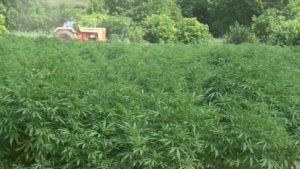


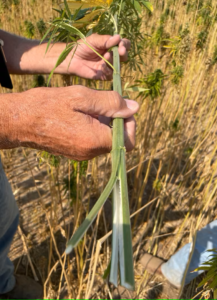


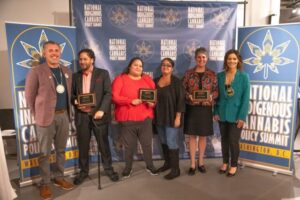

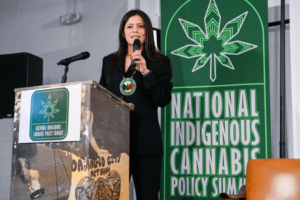

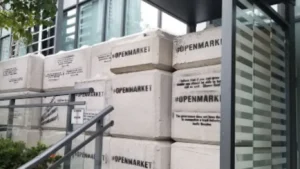

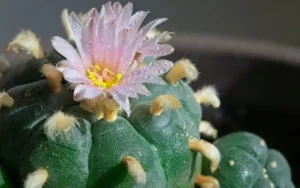
Comments are closed.